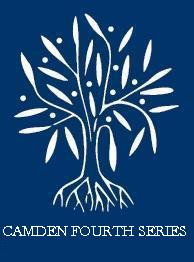No CrossRef data available.
Article contents
2. The Manuscripts
Published online by Cambridge University Press: 21 December 2009
Abstract

- Type
- Introduction
- Information
- Copyright
- Copyright © Royal Historical Society 1975
References
1 I am grateful to Mr M. A. F. Borrie for helpful discussion of this manuscript. A detailed description will appear in the volume of the British Library's Catalogue of Additions to the Manuscripts which includes accessions in 1955. Several accounts of the manuscript were published when it was acquired by the British Museum: Talbot, C. H., ‘A Cistercian Account Book’, The Listener, 4 08 1955, pp. 177–9Google Scholar; Friends of the National Libraries: Annual Report, 1953–6 pp. 5–6Google Scholar; Davis, G. R. C., ‘A Thirteenth-Century Account Book from Beaulieu Abbey’, British Museum Quarterly, xx (1955–1956), pp. 81–3Google Scholar; Talbot, C. H., ‘The Account Book of Beaulieu Abbey’, Ctteaux in de Nederlanden, ix (1958), pp. 189–210.Google Scholar
2 The pencil foliation given on accession at the British Museum runs from 1 to 73; as is the normal practice of the Department of Manuscripts the former front and back paste-downs bear roman folio numbers (fos. iii, iv). But fos. 1, 2 and 4 are blank leaves of modern parchment that have been attached to stubs of leaves torn out (see below).
3 fos. 39V, 41V and 43r.
4 fo. 28v.
5 An example of such a scrap-book, formed of illuminations cut from a medieval manuscript in the nineteenth century, was British Library Add. MSS. 29704, 29705, now re-arranged in reconstruction of the original manuscript (Rickert, Margaret, The Reconstructed Carmelite Missal (London, 1952)).Google Scholar
6 fos. 8, 10, 22, 26, 42 and 66.
7 fos. 41V and 43r.
8 fo. 28v.
9 i.e. the stubs or replacement leaves now numbered fos. 1, 2 and 4, and leaves removed from between fos. 2 and 3 (one), 70 and 71 (certainly one, probably two), 71 and 72 (six).
10 ‘4’ appears on fo. 5v (pp.1–3 were probably fos. 3r, 3v and 5r, from which the numbers are now missing) and the pagination is complete to ‘135’ on fo. 71r.
11 See the articles cited in n. 1 above.
12 Sotheby's sale-catalogue, 6 Dec. 1954, lot 35.
13 Both are on fo. iii.
14 The manuscript is described in Bernard, E., Catalogi Librorum Manuscriptorum Angliae et Hiberniae (1697), p. 288Google Scholar (no. 6375, recte 6414: MS. 2 in the Barlow bequest), and in F. Madan, H. H. E. Craster and others, Summary Catalogue of Western Manuscripts in the Bodleian Library (7 vols, 1895–1953), ii, pt 2, p. 1044Google Scholar (no. 6414).
15 fos. 58r–97v.
16 fos. 91r–92r. This was followed by a blank space of nearly three pages (subsequently filled in with other documents). Perhaps this section of the manuscript was entered after the following section had been written, too long a space being left blank for the purpose; alternatively, it may have been intended to copy in more of the Statute.
17 fos. 93V–97V. These documents were also copied into the Abbey's cartulary (The Beaulieu Cartulary, ed. S. F. Hockey (Southampton Records Series, vol. xvii, 1974), pp. 230–43).Google Scholar
18 Another manuscript drawn up as an aid to the management of the Faringdon properties survives as British Library Cotton MS. Nero A xii, which includes charters and also the custumals contained in MS. Barlow 49 (Davis, G. R. C., Medieval Cartularies of Great Britain (London, 1958), no. 41Google Scholar; Beaulieu Cartulary, pp. xvii–xviii).Google Scholar
19 fos. 92r–93v and 981–114v.
20 fo. 58v.
21 Nor do the hands of either Add. MS. 48978 or the original text of MS. Barlow 49 appear in the thirteenth-century sections of the Abbey's cartulary (cf. Beaulieu Cartulary, pp. xxiii–xxix).Google Scholar
22 fos. 4–56.
23 fos. 115–65.
24 fo. 4r.
25 fo. 1r.
26 fo. 13r.
27 fo. 8v.
28 fo. 63r.
29 e.g. there is a cross beside the space for the number of calves remaining at Soberton (fo. 13r) and in the margin another cross and ‘viij’, the number to be inserted; the forinsec expenses of the Warden of Faringdon (fo. 9v), which from ‘In expensis domini Edwardi’ to the total were entirely entered in this revision, partly over an erasure, are likewise marked with crosses and a marginal note now illegible except for the word ‘Edmundi’ (sic).
30 e.g. ‘Quando autem dominus Abbas comedit in hospitio … solet habere’ on fo. 57V has a touch of red on the initial; ‘Hic deest quomodo auena debet purgari … inrotulata’ on fo. 60v has the initial uncoloured.
31 Besides this second series of revisions, it is possible that the letters ‘b’ and ‘a’ added to reverse the order of two paragraphs (capons and hides) on fo. 22V, and of two entries (the second and third of forinsec receipts) on fo. 28v, are not in the original hand; and almost certainly it is a different but contemporary hand that has added both ‘in hoc libro contentorum’ to the note at the end of fo. 25r and the note of the absence of the account of the abbot's notary on fo. 70r.
32 These alterations of the second revision do not occur in the opening pages of the manuscript, and the first is the passage ‘unus pullanus … vj s. viij d.’ on fo. 15r.
33 e.g. in the account for Coxwell the forinsec expenses of Add. MS. 48978 become ‘Expensa non neccessaria’, and the number of young pigs (hogg') answered for is 33 (murrain 29, sold 4) instead of 34 (murrain 18, added to pigs 12, sold 4).
34 fo. 89r and 89v.
35 fos. 81r, 81v and 87v.
36 Where it is entered as ‘Custos Manerij’, with ‘de Farendon” added in different hand (fo. 58v).
37 See below, pp. 9–11.
38 See below, p. 163.
39 Manorial Records of Cuxham, Oxfordshire, ed. P. D. A. Harvey (Historical Manuscripts Commission and Oxon. Record Soc., 1975), pp. 14–18.


